In contrast to his 2013 survey at Schaulager museum, which spanned across video, photography, and installation, Steve McQueen’s Bass retreats from the image. As observed by writer María Inés Plaza Lazo, the British artist and filmmaker reminds us that beneath every surface lies a depth, and that some frequencies can only be heard in silence.
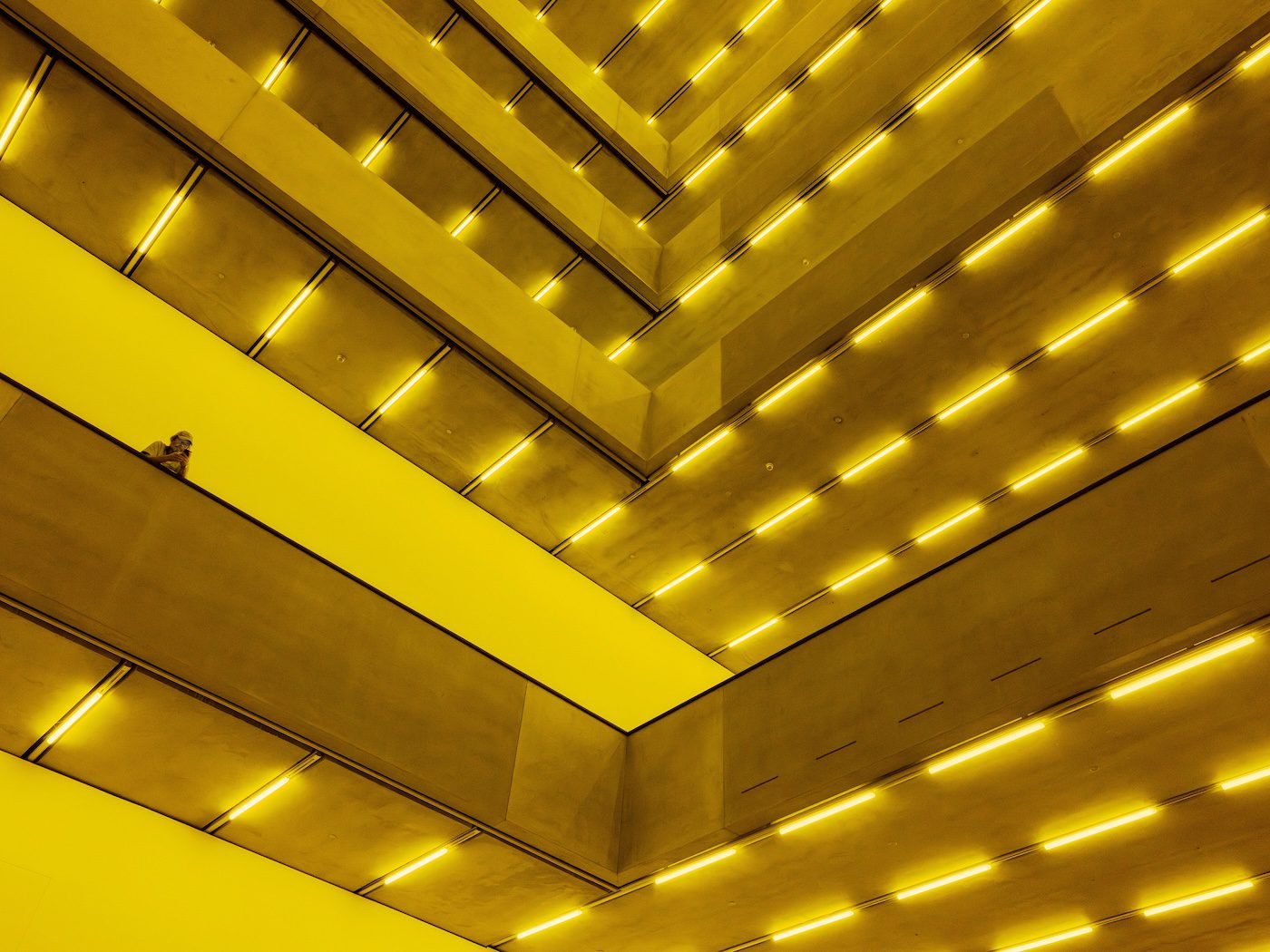
Steve McQueen, Bass, 2024, LED Light and Sound, Courtesy the artist, Co-commissioned work by Laurenz Foundation, Schaulager Basel and Dia Art Foundation, 15 June – 16 November 2025, Schaulager® Münchenstein/Basel (Installation view), Photo: Pati Grabowicz, © Steve McQueen
The bunker held its breath, and from deep within its concrete belly, a low frequency began to surface — not as sound at first, but as light. The bass didn’t throb through impatient bodies of visitors, but shimmered through a slow flicker of color washing the room, lingering behind my eyelids.
It was empty by the time I arrived. No Art Basel hum, no footsteps pacing in sync with deadlines. The Schaulager is a concrete stronghold built to control light and temperature, and its architecture reveals its contradictions under Steve McQueen’s dramatic compositions. ‘Institutions must interrogate their bunker-like impulse’, argued Karen Archey during a symposium titled Rethinking the Museum, held last June at K20 in Düsseldorf. The impulse to contain, preserve, isolate. In Bass, McQueen must also have departed from the question of topography. He reconditions rather than destroys it. The space transforms from fortress into vessel — a structure of containment forced to resonate.

Steve McQueen, Bass, 2024, LED Light and Sound, Courtesy the artist, Co-commissioned work by Laurenz Foundation, Schaulager Basel and Dia Art Foundation, 15 June – 16 November 2025, Schaulager® Münchenstein/Basel (Installation view), Photo: Pati Grabowicz, © Steve McQueen
As a choreography of resonance, shadow, and hue, the installation draws us into another temporality. The walls are stripped of visuals, yet the work is anything but empty. It pulses with presence. This is a sonic structure that is neither soundtrack nor sculpture. It is sedimentary. Music not as accompaniment, but as strata. As a foundation. As code.
McQueen collaborated with musician Marcus Miller to bring together an intergenerational ensemble of bassists for an improvised composition recorded at Dia Beacon in early 2024. Laura-Simone Martin, Mamadou Kouyaté, Aston Barrett Jr., and Meshell Ndegeocello each played a different type of bass, with each instrument registering a frequency of Diaspora, a lineage of Black sonic intelligence. Through Bass emerges a new grammar of duration: its time is tidal, not chronological. Three hours of sound loop against thirty minutes of mutating light, creating climates according to colors and notes. One does not view the work so much as endure it. There is no beginning, no plot. We enter a continuum, and when we leave it continues with or without us.
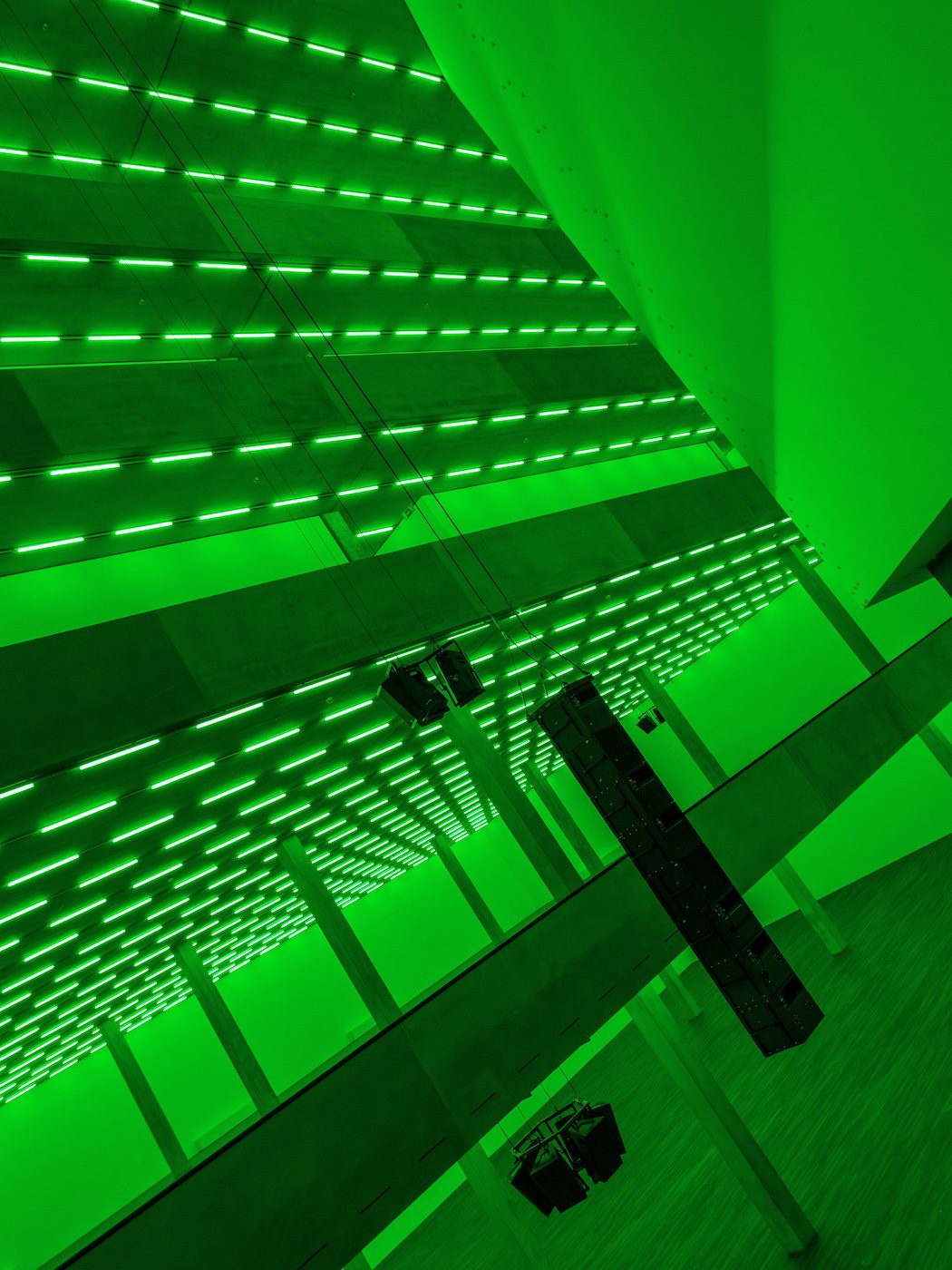
Steve McQueen, Bass, 2024, LED Light and Sound, Courtesy the artist, Co-commissioned work by Laurenz Foundation, Schaulager Basel and Dia Art Foundation, 15 June – 16 November 2025, Schaulager® Münchenstein/Basel (Installation view), Photo: Pati Grabowicz, © Steve McQueen
For me, this immersive atmosphere echoes Algorithm Ocean True Blood Moves, a dance performance by Julien Creuzet shown in New York and Amsterdam in 2023 and 2024. Born in France and raised in Martinique, Creuzet is a poet, artist, and filmmaker whose hybrid practice weaves Caribbean histories with futuristic poetics, operating between languages, geographies, and temporalities. In this work he collaborated with Brazilian-Haitian choreographer and researcher Ana Pi, whose work centers on the transmission of Afro-diasporic gestures and the politics of bodily presence. Pi’s choreography in Algorithm mapped diasporic memory through movement drawn from Black Atlantic archives – gestures traced from YouTube to Haiti, from Brazil to Martinique, and sampled by DJ Natoxy. Creuzet’s methodology, like McQueen’s for this exhibition, works beneath the surface. Both prefer drift to destination, minimalism to overexplanation.
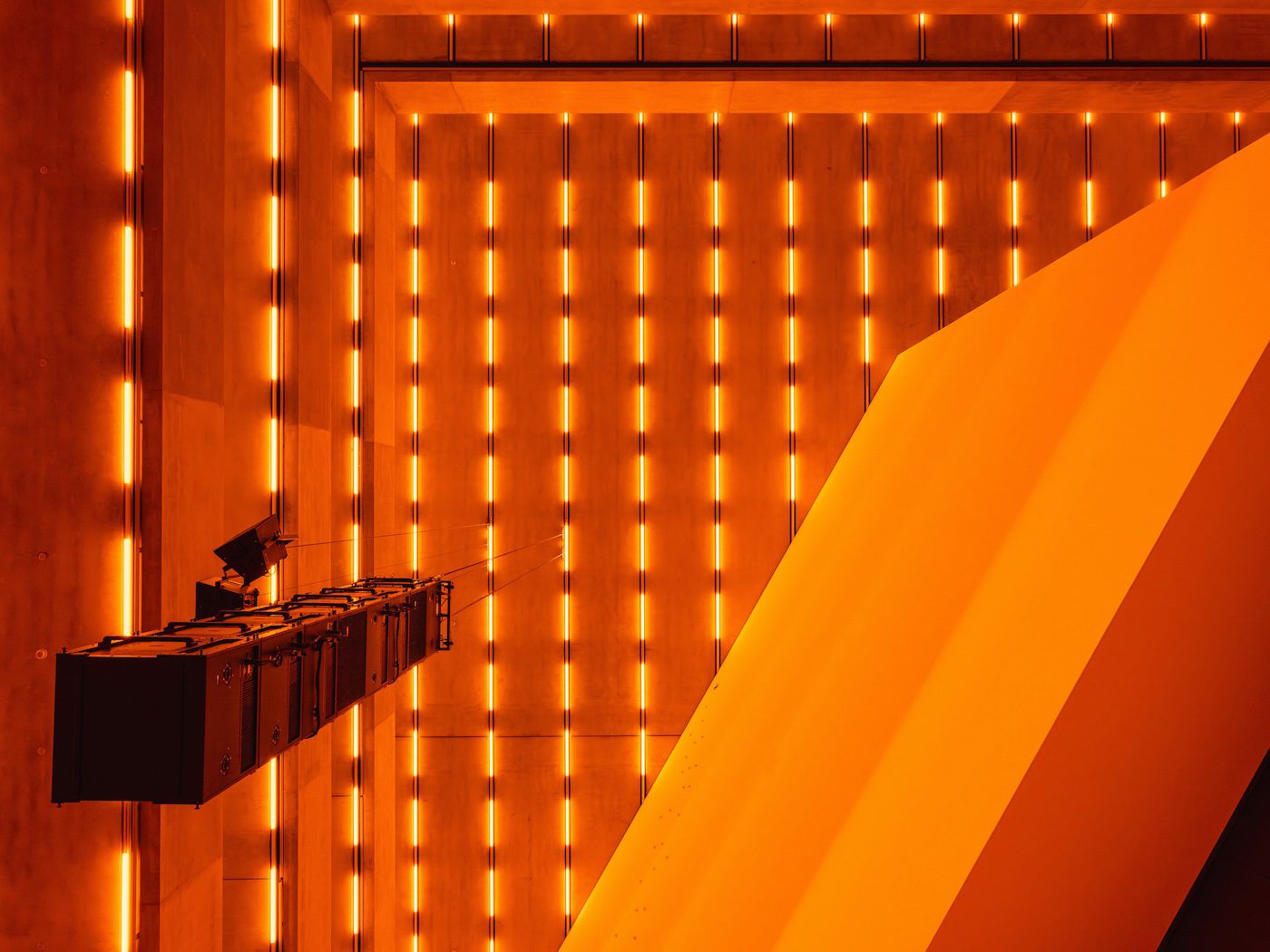
Steve McQueen, Bass, 2024, LED Light and Sound, Courtesy the artist, Co-commissioned work by Laurenz Foundation, Schaulager Basel and Dia Art Foundation, 15 June – 16 November 2025, Schaulager® Münchenstein/Basel (Installation view), Photo: Pati Grabowicz, © Steve McQueen
McQueen’s use of minimalism refuses the neutralism historically attached to the term and method. If minimalism has been defined by its reduction of form, repetition, and emphasis on pure perception – often framed as apolitical or universal – McQueen’s version is about resonance. Each note and each hue returns with the memory of previous ones. The frequencies of Bass are oceanic. They don’t travel across the surface, they reverberate from below. The bass doesn’t anchor the music; it absorbs and redistributes gravity. It thickens the air. As sound deepens, so does the light.
This spatial density reminds me of O Barco (2021), a sculptural installation by Grada Kilomba, a writer, theorist, and artist whose work centers on decolonial memory and the politics of storytelling. Kilomba marked the ground with 140 monumental blocks of charred wood bearing songs carved in gold leaf and arranged in the shape of a ship’s lower deck, evoking the Middle Passage. The burned blocks created a huge stage for speaking, for mourning, for reassembly. Bass, too, dredges memory from the depths; both McQueen and Kilomba refuse the simplification of the unspeakable.
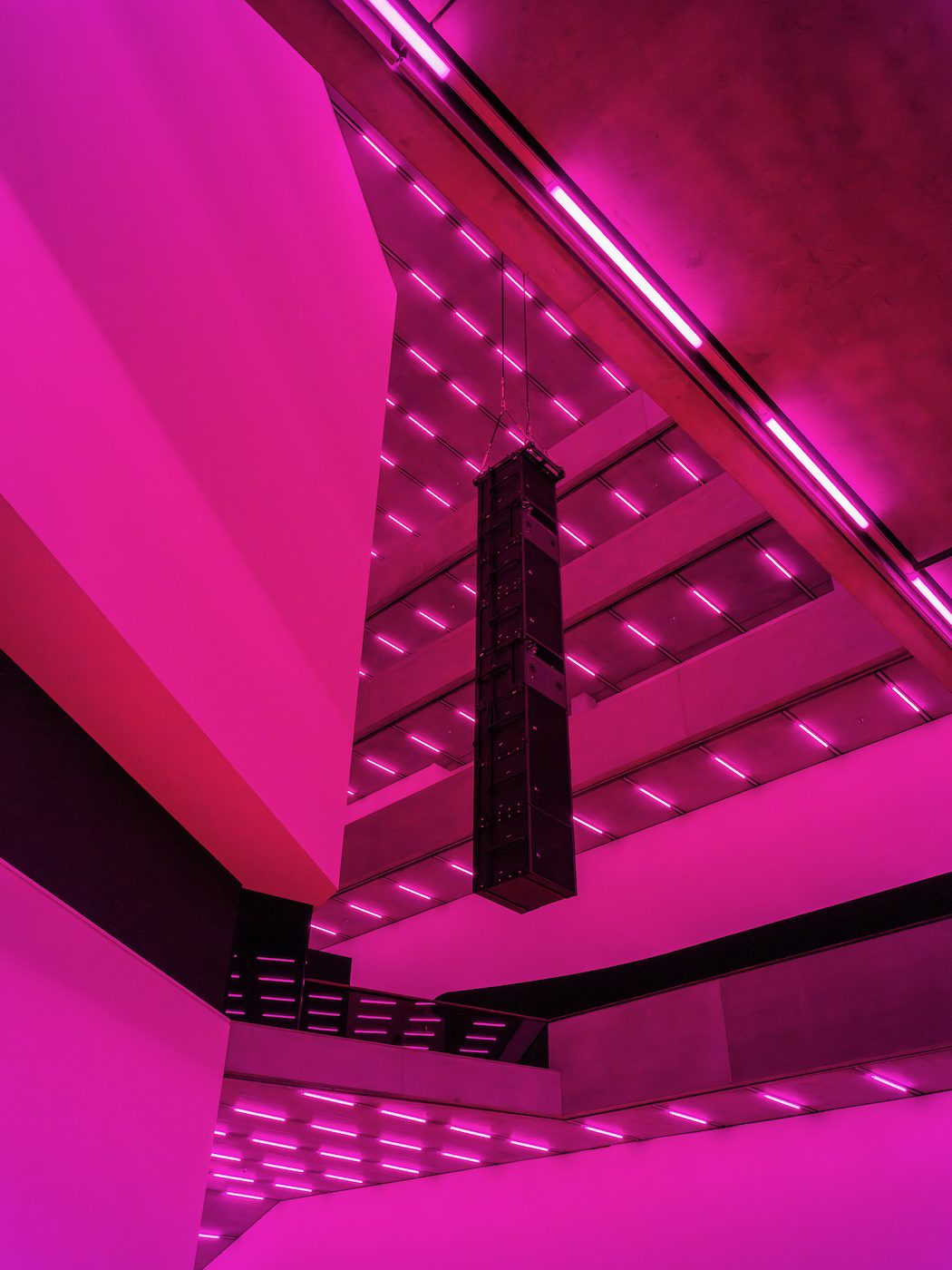
Steve McQueen, Bass, 2024, LED Light and Sound, Courtesy the artist, Co-commissioned work by Laurenz Foundation, Schaulager Basel and Dia Art Foundation, 15 June – 16 November 2025, Schaulager® Münchenstein/Basel (Installation view), Photo: Pati Grabowicz, © Steve McQueen
The Schaulager, like Dia Beacon, cannot remain neutral. Its grid of columns, its concrete surface, and its institutional chill all become actors. This is a post-apocalyptic condition that McQueen has evoked elsewhere: one of continuous survival in the aftermath. After every catastrophe. After slavery. After silence. Other films that McQueen has made for exhibition contexts – Sunshine State (2022), Bounty (2025), Occupied City (2023) – similarly refuse instruction. They do not explain grief. They house it. They frame it not as a moment but as an atmosphere. Here the bass is the protagonist. The bassline is the undercurrent that persists when narrative fails.
Far from decorative, the selection of musicians forms the structure of Bass. Each player’s instrument carries more than rhythm, their tuning is collective and ancestral. The chord is survival. The ensemble is the archive. For those expecting a retrospective or narrative arc, Bass might appear austere. But austerity here is discipline. It is listening. It is not a lack of vision but a refusal of spectacle. This is a subtraction with weight. In contrast to McQueen’s 2013 Schaulager survey, which spanned video, photography, and installation in dense succession, Bass retreats from the image. It composes a threshold. A depth.
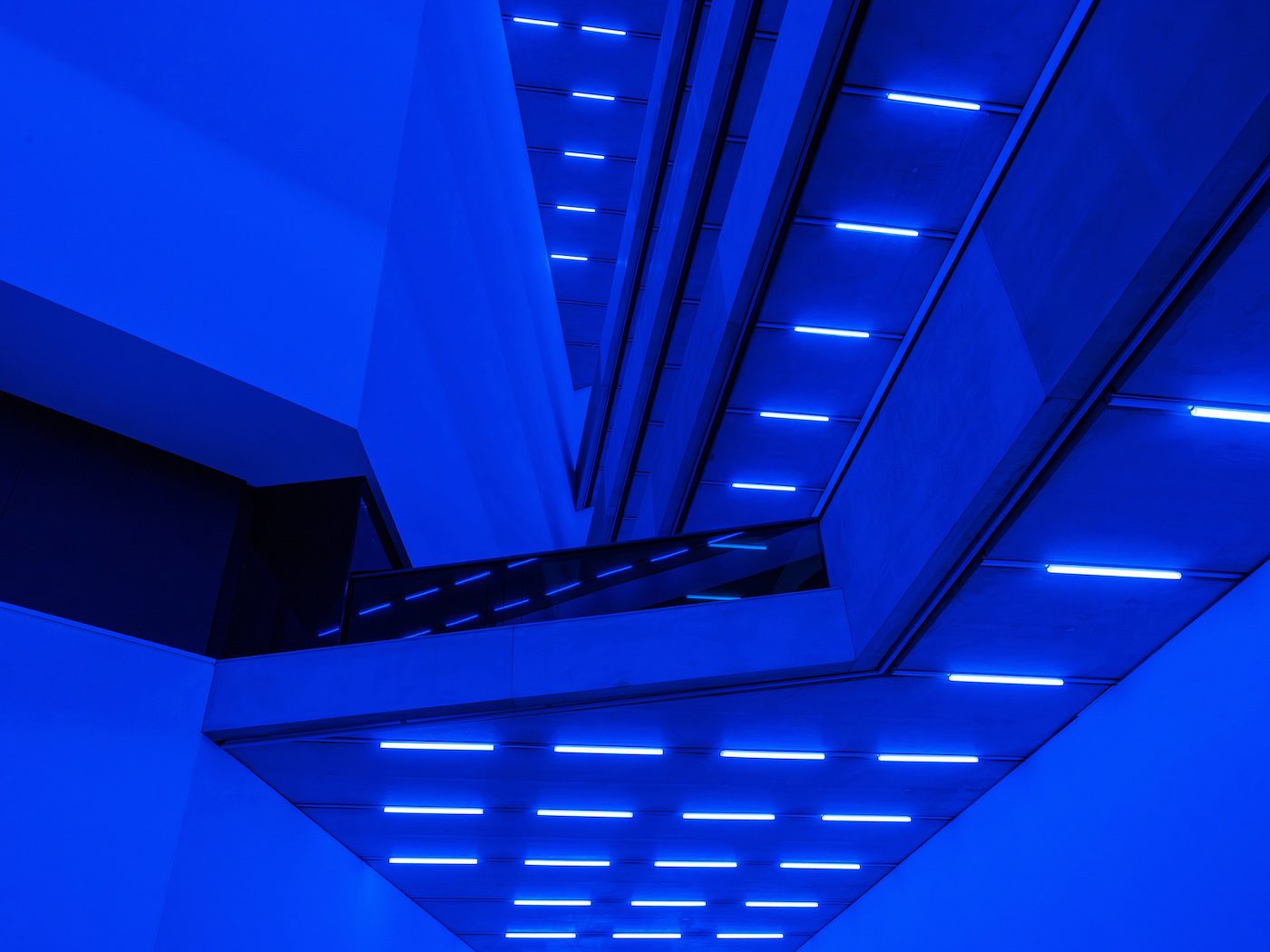
Steve McQueen, Bass, 2024, LED Light and Sound, Courtesy the artist, Co-commissioned work by Laurenz Foundation, Schaulager Basel and Dia Art Foundation, 15 June – 16 November 2025, Schaulager® Münchenstein/Basel (Installation view), Photo: Pati Grabowicz, © Steve McQueen
Like Creuzet’s bodily cartographies and Kilomba’s refigured monuments, McQueen’s sonic architecture aims for holding rather than catharsis. For trembling instead of transcending. In the end, Bass offers no landing. Like the history it echoes, the structure is unresolved. And while one might be tempted to cast the visitor as a passenger, such metaphors risk effacing the violence of our collective roots. The ship is not a symbol of mobility but a site of captivity. McQueen does not romanticize the journey. He excavates it. He makes us feel its repetition. We are not passengers. We are implicated. Bass is a re-tuning, yes, but also a reminder that beneath every surface lies a depth. That some frequencies can only be heard in silence. And that some stories do not arrive – they resound.
Steve McQueen’s Bass is on view at Schaulager Basel and Dia Art Foundation from 15 June – 16 November 2025.
María Inés Plaza Lazo is a writer, editor, and cultural worker from Guayaquil, Ecuador. She is the cofounder and editor of Arts of the Working Class, a multilingual street journal on poverty and wealth, art and society. Trained in art history in Munich and shaped by transnational feminist practice, her work moves between publishing, curating, and collective pedagogy – always questioning who art is for and under what conditions it circulates.
ALL ABOUT ARCHITECTURE
More Editorial